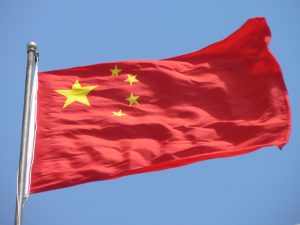The People’s Liberation Army (PLA) has confirmed for the first time, through a carefully worded article, that it lost at least four lives during the June 15 Galwan Valley clash with Indian soldiers. The clash – which also led to the death of 20 Indian soldiers – was the first time since 1975 that a confrontation between the two forces along the 3,488-kilometers long China-India Line of Actual Control caused fatalities.
In an article published on February 19, state-run news agency Xinhua said that “China’s military authorities have honored two officers and three soldiers, including four who received the awards posthumously, for defending the country’s western border.” Interestingly enough, not naming India, it went on to add: “The People’s Liberation Army Daily on Friday reported that the Central Military Commission issued commendations to the servicemen for their role in bravely fighting back hostilities provoked by foreign forces at the Galwan Valley.”
Indian Army officer Colonel Santhosh Babu, who was killed in action while commanding troops from the 16th Bihar Regiment that clashed with the PLA in the Galwan Valley, was posthumously named for India’s second highest military award on January 25. Four other Indian soldiers who were also killed during the clash were also announced as recipients of military awards that day.
The Chinese announcement coincided with Indian media reports that the PLA and the Indian Army had completed disengagement in both the north bank/“fingers” area as well as the south bank of the Pangong Lake, ahead of the 10th round of the military commanders’ talks tomorrow to resolve other points of friction in Ladakh, including in the Hot Springs-Gogra and Depsang areas.
Reacting to the PLA Daily story, a spokesperson for Chinese Ministry of National Defense, Senior Colonel Ren Guoqiang, (as translated by China Military Online) stated: “After the skirmish, the Chinese side, out of consideration to preserve the overall situation of the relations between China and India as well as the two militaries, promoted the cooling and easing of the situation and exercised a high degree of restraint, which reflects China’s manner as a responsible power.”
“However, the Indian side has repeatedly hyped up the casualties, distorted the truth, misled international public opinion, and slandered the Chinese border troops,” he added.
As the PLA’s announcement started making rounds on social media, on cue Chinese journalists posted a number of short videos of the June 15 clash and its aftermath, including one by Global Times Editor in Chief Hu Xijin.
Following the February 10 PLA announcement that Chinese and Indian forces had commenced disengagement in the Pangong Lake area – and confirmation of the fact by the Indian Defense Minister Rajnath Singh the day after — the Indian government had embarked on a media campaign to release details about the Ladakh standoff so far, fielding Northern Command chief Lieutenant General Y.K. Joshi for the job. It is plausible that the PLA’s decision to make (at least some of its) fatalities in the clash public was reactive, and prompted by Joshi’s media blitz.
Meanwhile, the Chinese foreign ministry also weighed in on the PLA Daily announcement during the daily press briefing on February 19. In a long reply to a question, spokesperson Hua Chunying effectively reiterated the thrust of the comments by her defense ministry counterpart, though concluding her remarks in a conciliatory tone.

































